At Paris Couture, Unfiltered Glamour Ruled
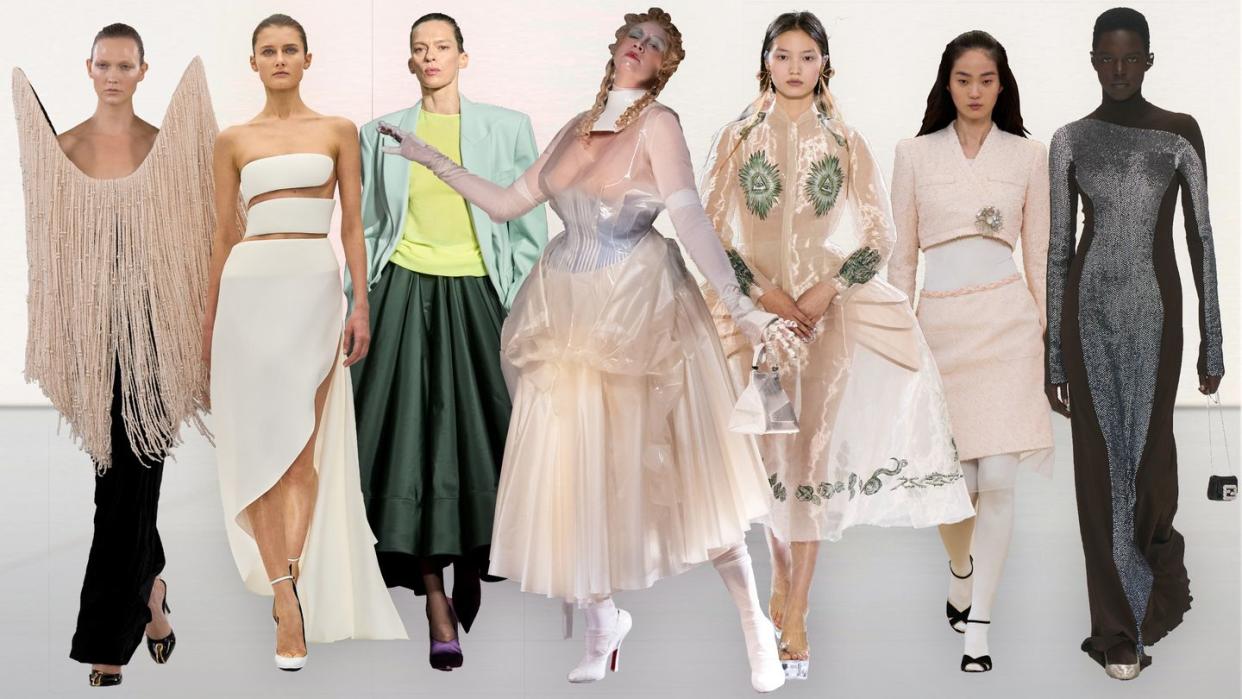
"Hearst Magazines and Yahoo may earn commission or revenue on some items through these links."
On Tuesday night, the new FX/Hulu series Feud: Capote vs. The Swans premiered at The Plaza Hotel in New York. The Ryan Murphy-created drama centers around Truman Capote’s one-time, high-society confidants, women whose impeccable style belied their messy-as-hell lives behind closed doors. On the red carpet, the stars played up the theme and coordinated in a palette of black and white. Chloe Sevigny, Demi Moore, Calista Flockhart, Diane Lane, and Naomi Watts all dressed like their characters, Sevigny went as a modern C.Z Guest in gloves and a bow-bedecked white pouf dress by Christopher John Rogers, and Demi Moore did her best Anne Woodward in a Balmain gown decorated with an embellished swan.
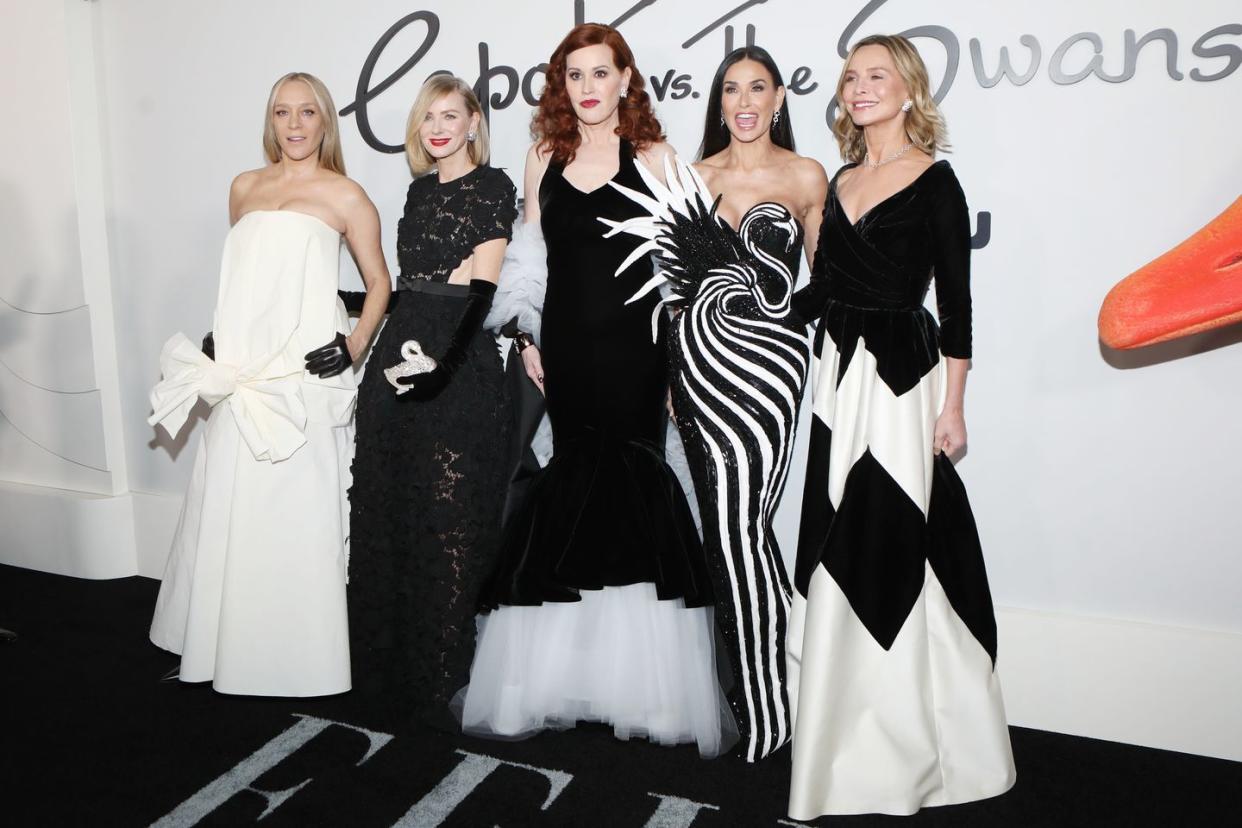
It’s fitting that this 1950s socialite cosplay made headlines just as Haute Couture Week in Paris was kicking off for spring 2024. Both offered fashion propositions anchored in theatrics and costume, around the dualities of glamour as they exist now, in a time when the vernacular of personal style is muddied by Internet-born “aesthetics” (or dressing according to a theme, rather than cultivating one’s own look). There’s been a ton of red carpet character dressing during the last year or so—the Swans, Barbie-core, Priscilla hair—and in many cases, personas have overtaken personality. Self-expression aside, this all begs the question: does unadulterated glamour still exist in an age where glamorous style means dressing for a previous era, like wearing opera gloves and pillbox hats and ball skirts? That’s all fun, but one wonders what the future of glamour looks like minus the camp.
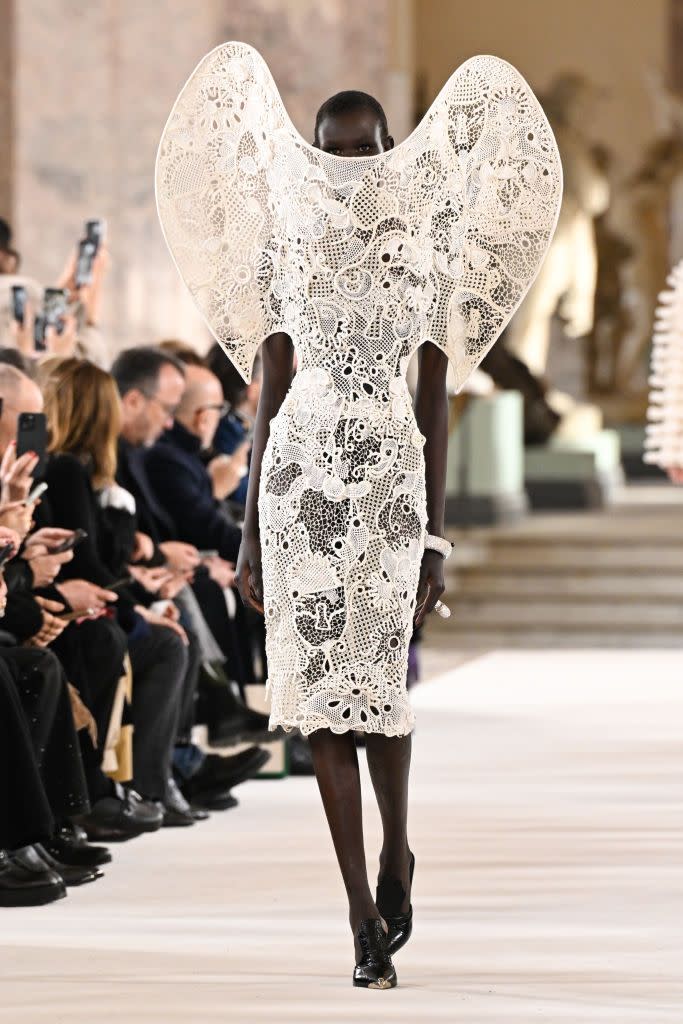
The best couture collections this season offered a few answers. There were magical new ideas for dressing with a kind of power and contemporary glamour, even if it was placed into a fantastical narrative or borrowed heavily from the past. At Schiaparelli, Daniel Roseberry did sci-fi glam by way of Sigourney Weaver in Aliens, with not-of-this world anatomical shapes and CD-ROM-i-fied embellishments. It was classic Schiap surrealism with a tech bend, not just in the robot baby carried down the runway by Maggie Maurer, but with clothes that exemplified the highest art of tailoring, like the doll-like ballooned sleeves on tops and gowns with shoulders and necklines sculpted to look like the rolling landscapes in Dune. At Fendi, Kim Jones too looked to unknown galaxies for inspiration, delivering a collection that was sharp and sophisticated—a cool and hot kind of glamour that might move us all to infinity and beyond.
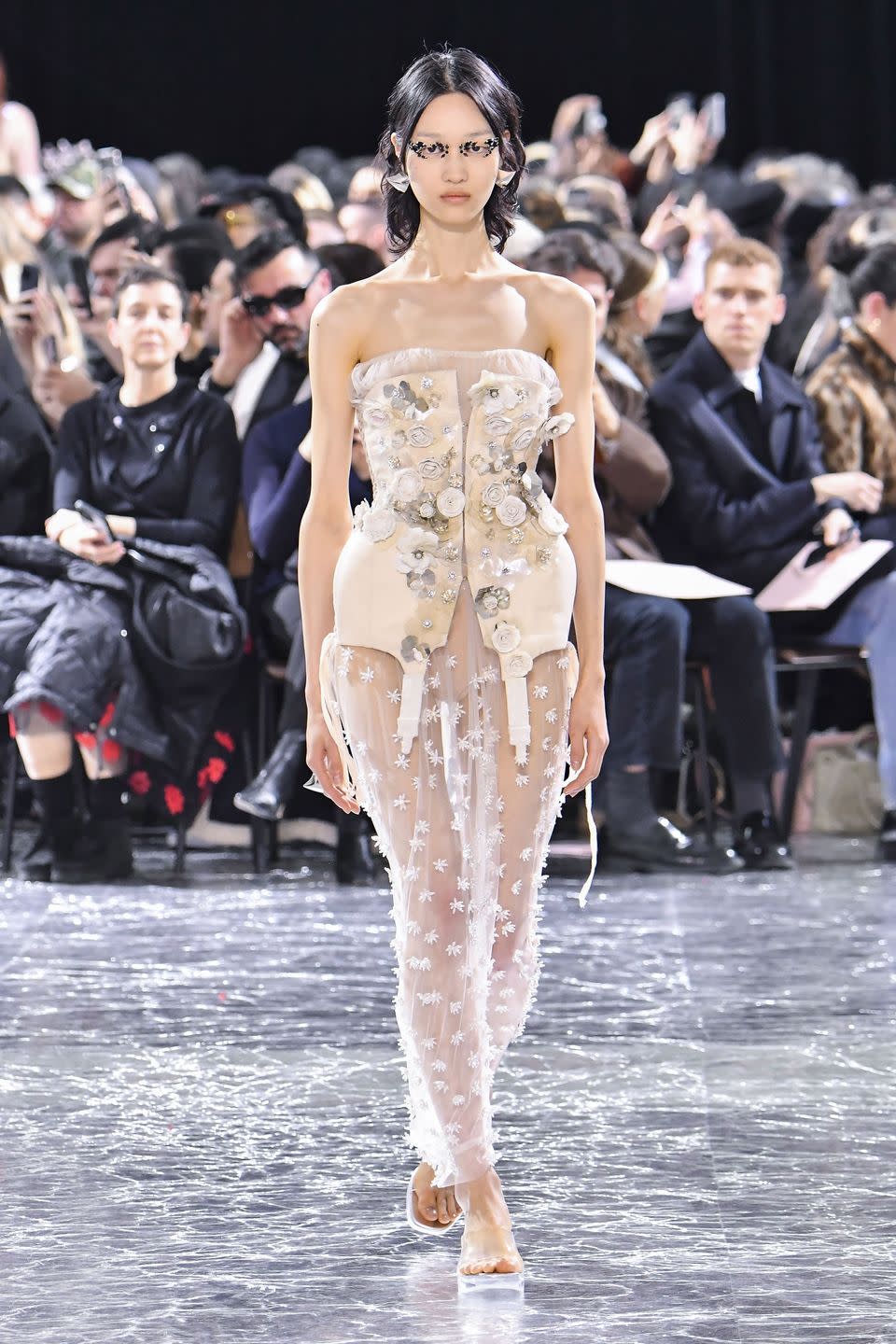
Those bionic women were a stark but brilliant contrast to the spectacularly deranged dames at Jean Paul Gaultier’s show, which saw Simone Rocha presenting her guest collection for the house. It was an epic mash-up of two of the industry’s most beloved and forward-thinking designers, one a man whose iconic cone bras and sailor stripes gave way to an entire generation of liberated dressers and the other a woman whose romantic, skillfull designs have a cult-like following. The collection was powerful and precise but totally un-precious—a formula that can be difficult to achieve with couture, a rarified craft practice in fashion made only for celebrities and the one percent. Details (including red tulle, horn-shaped bodices, unraveling corsets, and crystal fringe) felt like a coquette fantasia, one that was not about going back to girlhood but rather finding strength in one’s own sexual freedom. There was a well-balanced array of costume-y creations and classic day and eveningwear, pieces that could be worn by either matriarch or daughter at a bacchanal on the grounds of the Saltburn estate.
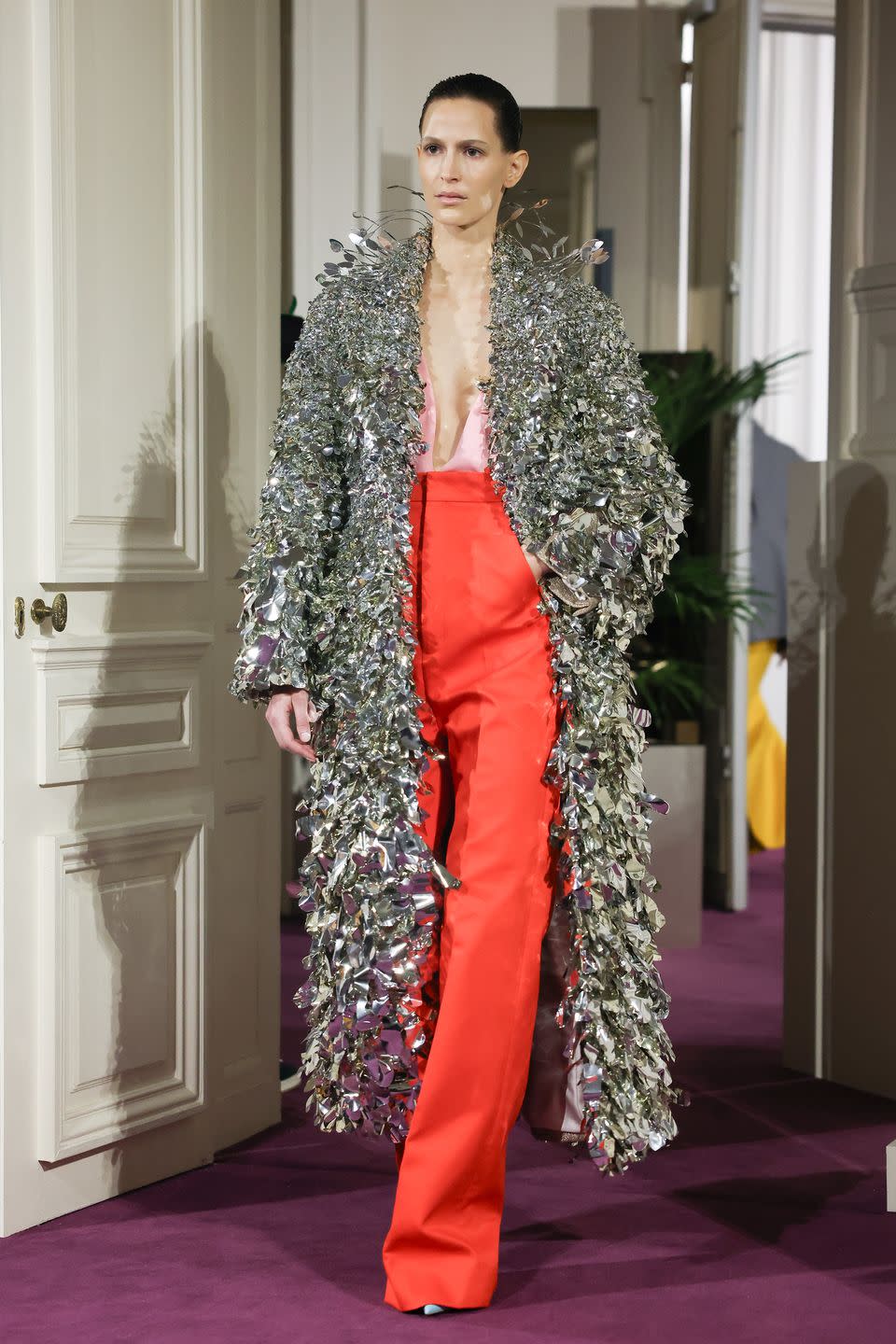
Another display of generational glamour was on display in the front row at Valentino, when Kylie Jenner turned up to the show with her mom Kris and her daughter Stormi Webster in tow. The Jenner clan exemplifies another kind of 2024-era glamour, one that might be manufactured but is also about being bold and successful—and, weirdly, relatable. When Pierpaolo Piccioli’s collection came down the runway, there was a similarly empowering aura to it all, and that same strange relatability. His couture this season wasn’t necessarily about statement-making art, though there were plenty of incredible, potential awards season gowns on display. Instead, it was about couture as wardrobe. Some of the most impactful looks were those that gave us dream-like versions of our everyday garb, like oversized cargo parkas paired with transparent tees and rounded-pleat ball skirts. There were trenches thrown easily over sensual draped dresses with thigh-high slits, and classic trousers in bright hues paired with exquisitely-made embellished ponchos and coats.
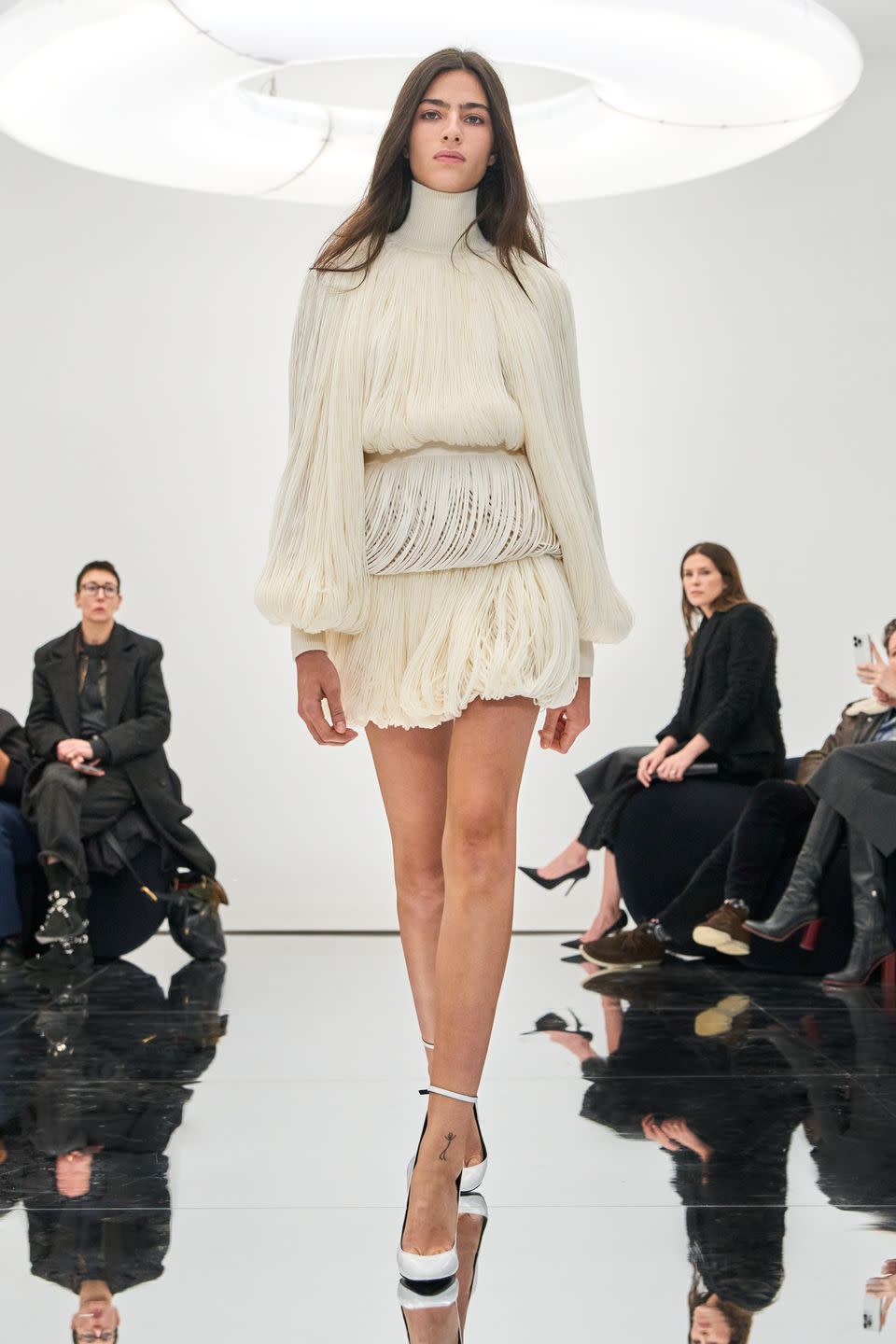
In a similar act of focus on the clothes, Alaïa’s Pieter Mulier and his team took a single wool yarn and created a stunningly simplistic but entrancing collection that was about the intimacy and the art of couture. It was in this show that one saw a possible segway for this highly commercialized moment of glamour we’re living in. Mulier recognizes and harnesses the strength in a woman and the way she wears clothes. He emphasized curves and shapes and fluidity with pieces like a 3D-printed spiral gown, molded to the body like magic—there’s that word again—or a balloon-hem fringed mini dress with surrealist anatomical proportions.

Then came the great John Galliano. In the audience, the industry’s most illustrious critics and editors were visibly googly-eyed, some smiling with their mouths wide open like they’d been electroshocked back to the realization that, yes, there is still magic—and therefore glamour—in fashion. The performance element of this collection was brilliant, but more impactful was the return of Galliano’s unbridled assuredness, a confidence to go full-steam with his singular vision, even if it felt like a blast from the past. You saw it in the ballooned panniers, the prosthetics that took a year to craft, and the cheeky faux public hair merkins that shone through delicately painted transparent slips. It was in the model’s gestures and the way they slinked and creaked and cracked like Victorian dolls come to life, some in corsets and others in skirts with exaggerated hips, moving through the darkened space beneath a bridge in Paris meant to evoke a local cafe as Brassaï might have captured it. There was lace and latex, sex and darkness and dilapidation. To close, actress Gwendoline Christie sauntered out with a glassy face—makeup was by the genius Pat McGrath—like a woman occupying both living and dead worlds.
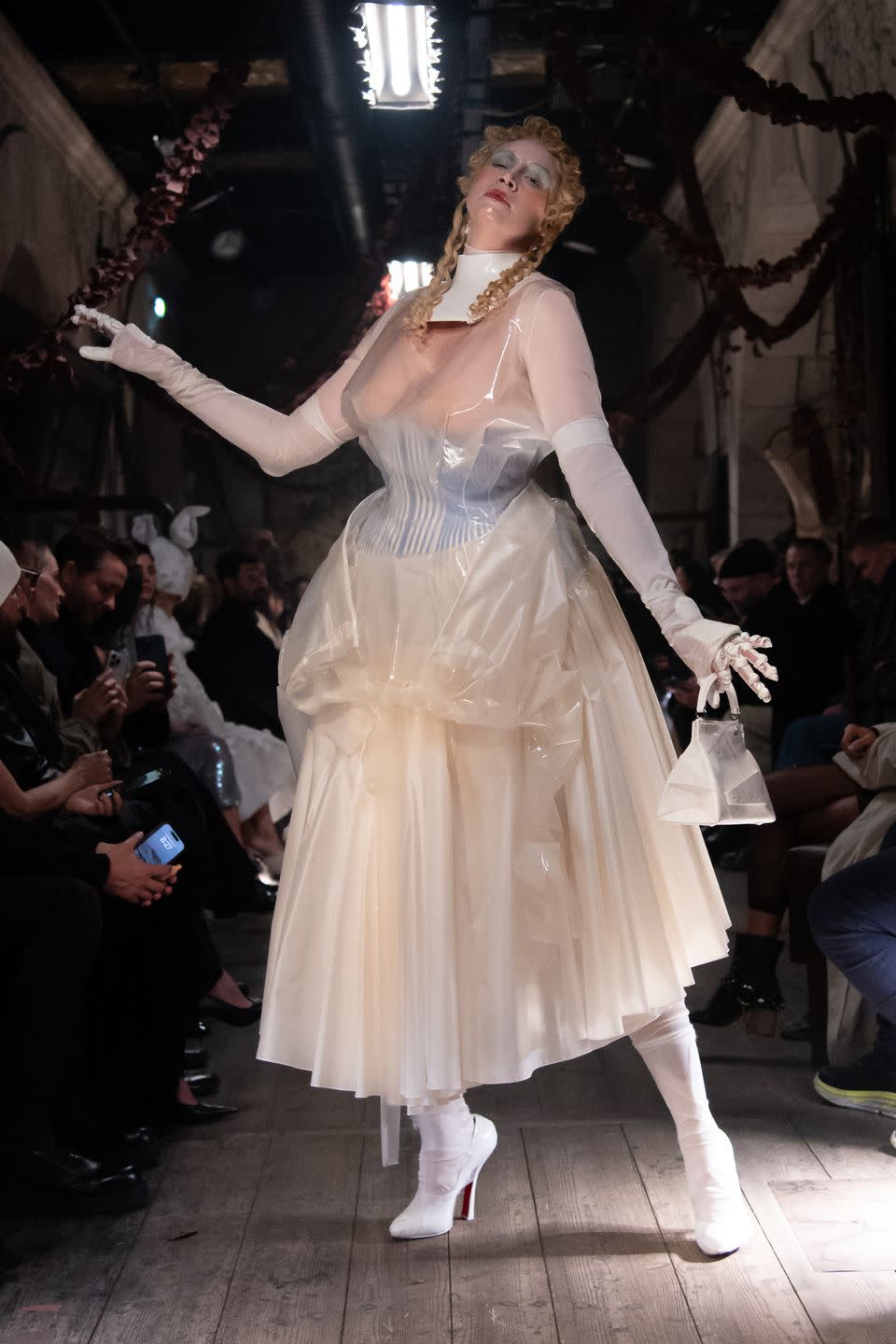
Galliano essentially took all the good ideas presented throughout the week and mashed them up into something great. He whipped them into a character study of modern glamour, one that can exist in whatever form the wearer wants but should always be born out of something inherent. Most importantly, Galliano was honest in his celebration of the female form, casting a range of sizes that was otherwise completely absent from the week, save for a few of the models at Rocha’s show for Jean Paul Gaultier. While couture is singular in so many ways (and certainly isn’t inclusive in terms of the pool of people who get to buy and wear these creations), it does serve as inspiration and therefore should reflect the whole of global fashion, as far as women’s bodies and needs and wants are concerned.
As Galliano explained in his show notes, his couture collection was predominantly “a study in the ritual of dressing as a composition of the self.” What a profoundly important message to promote at a time when all of us are constantly bombarded by various modes of glamour, often the kind that tells us we need to become someone else or something better. The future of glamour is that it doesn’t have to be one thing or another, so long as we find the magic in it for ourselves.
You Might Also Like
